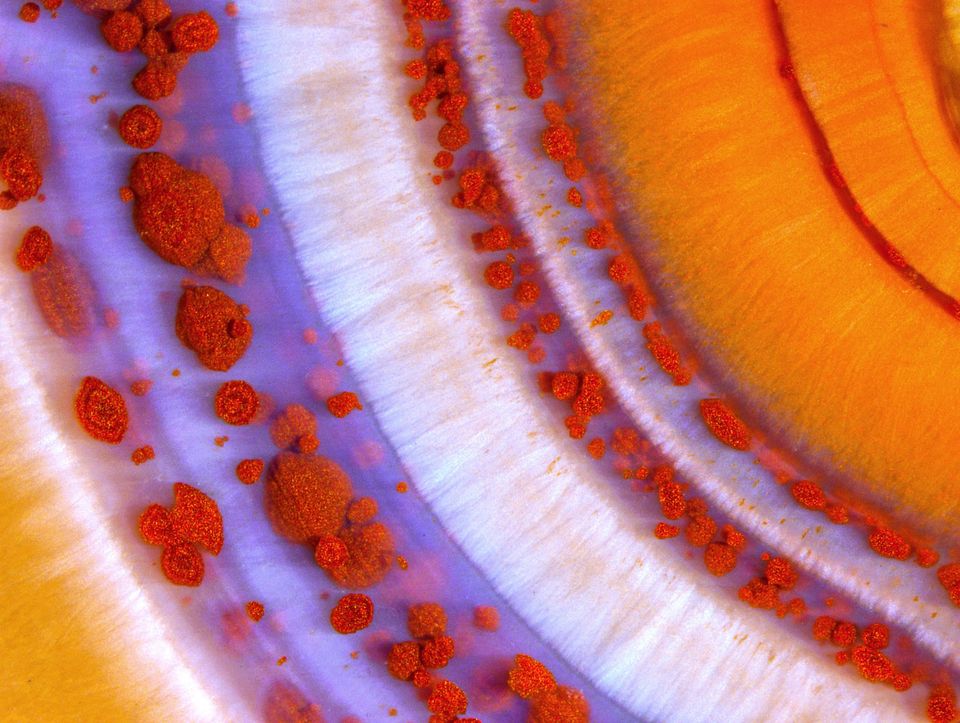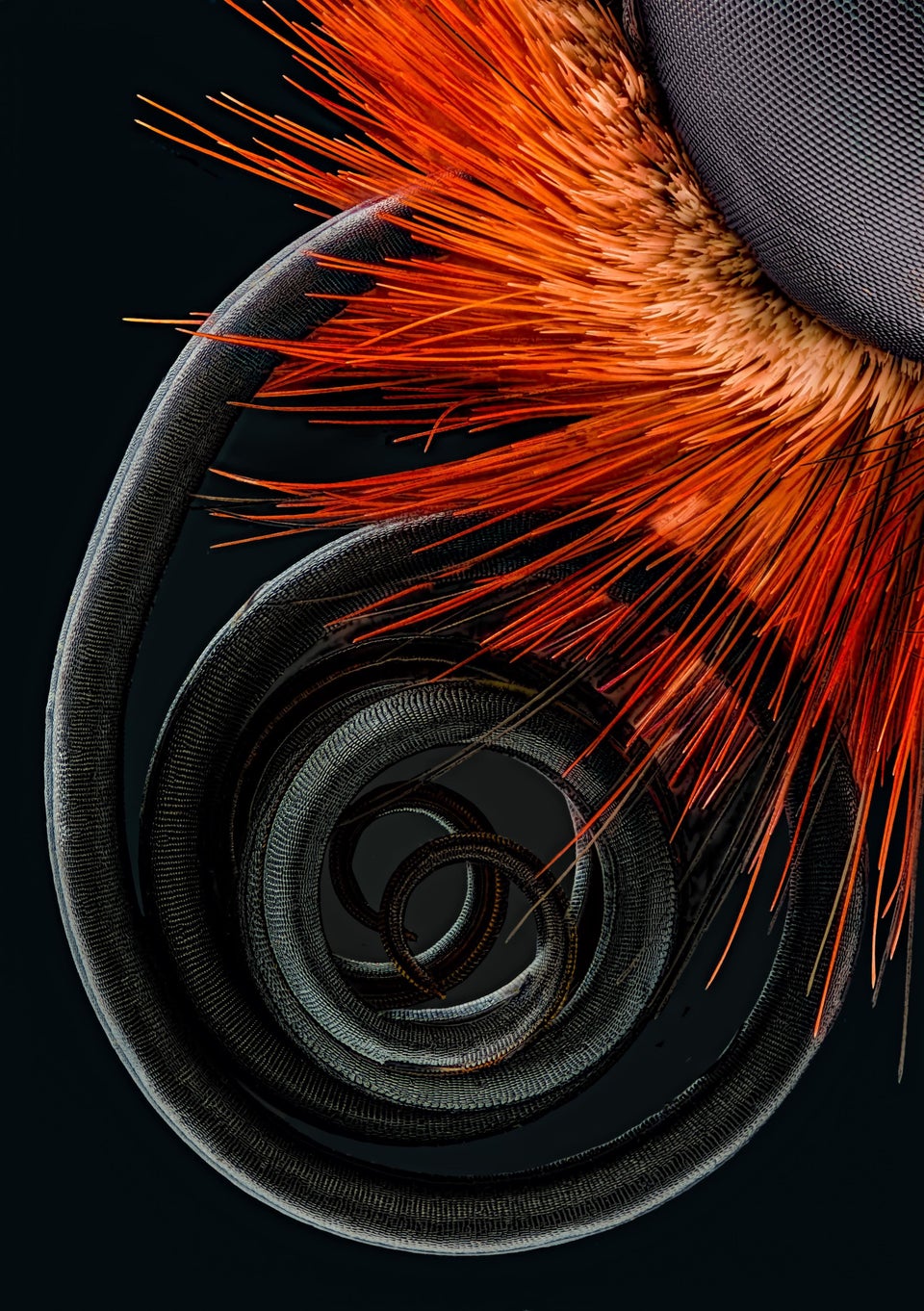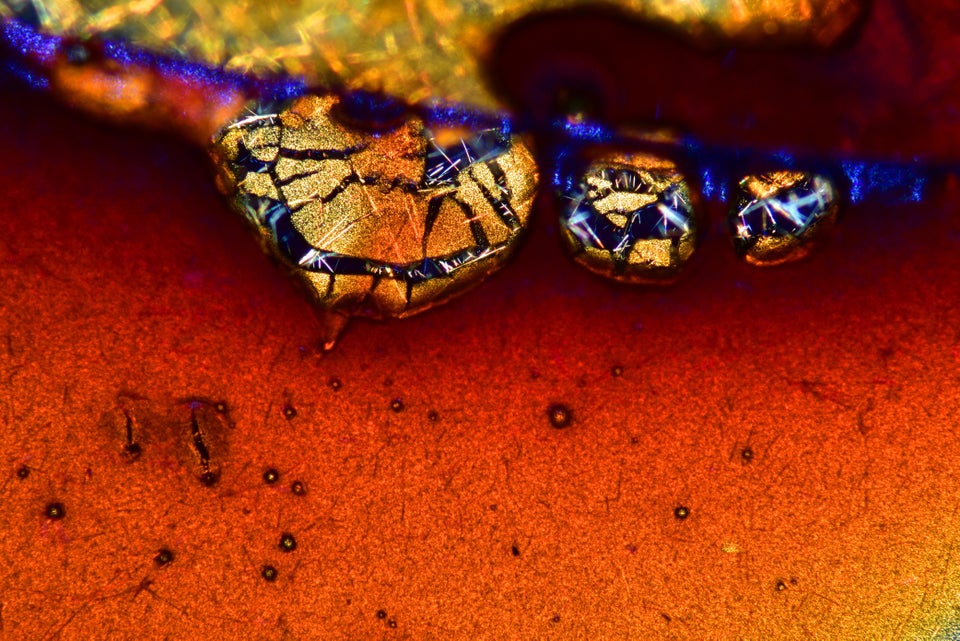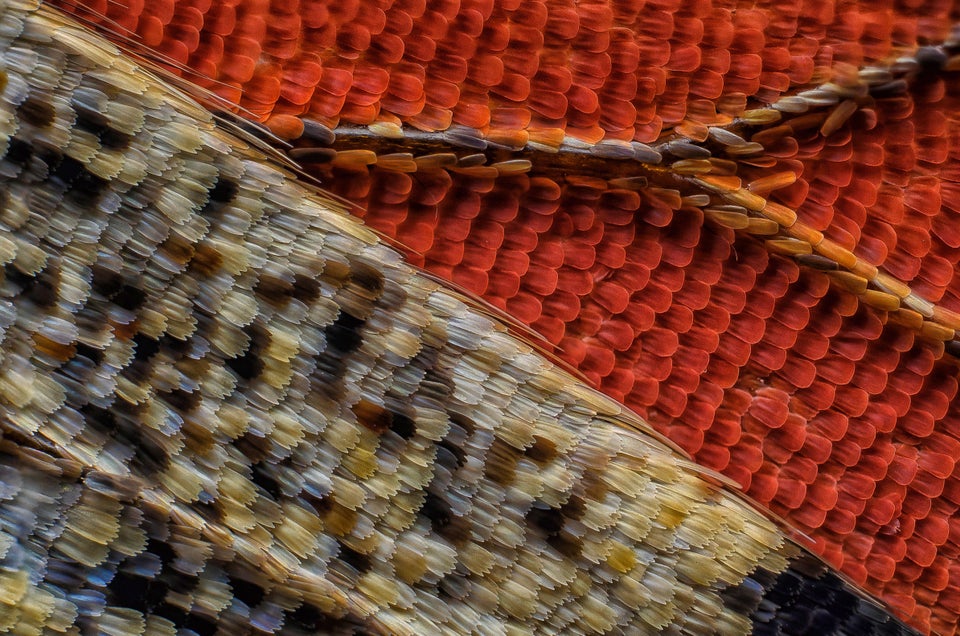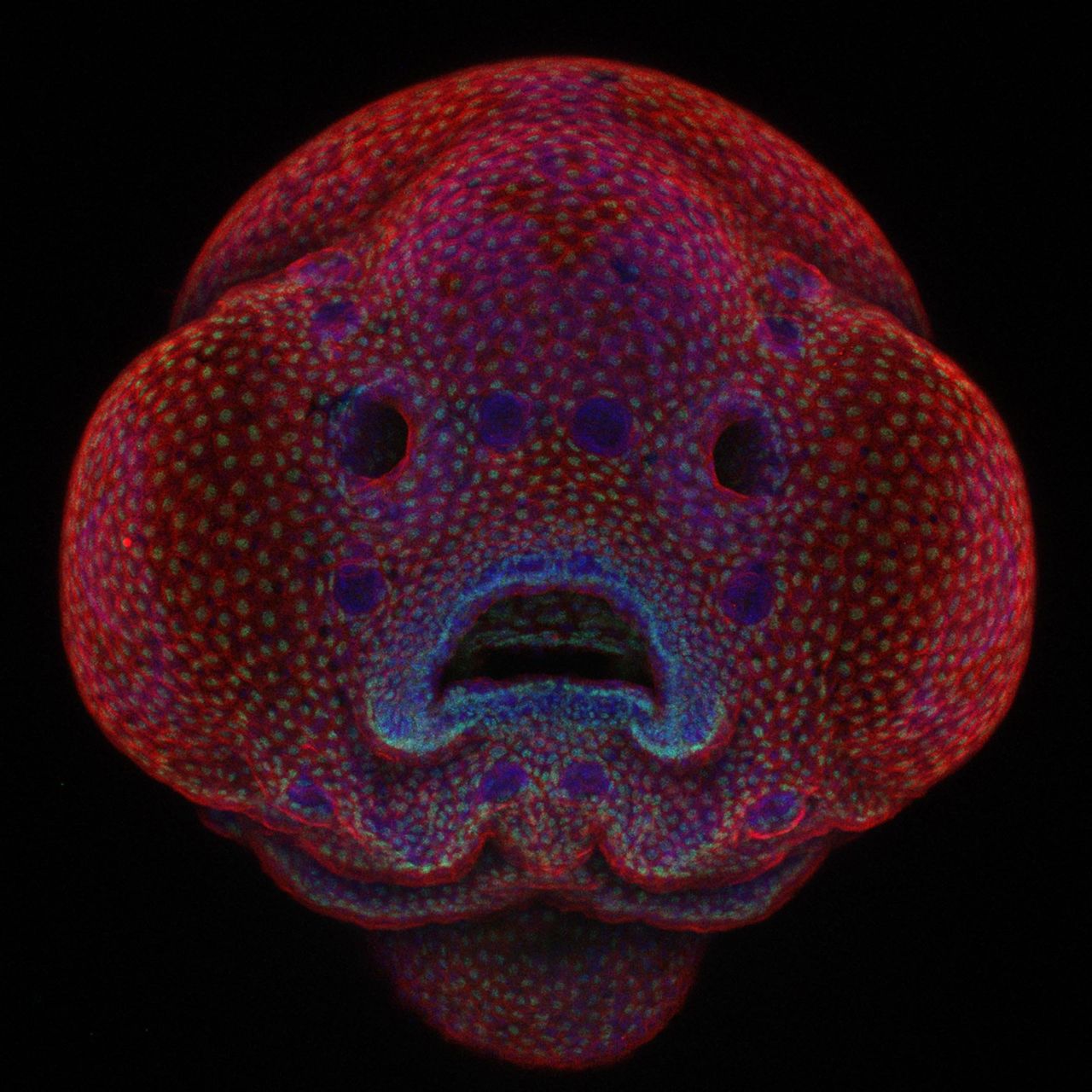A spectacular “zebrafish selfie” has been awarded first place in the 2016 Nikon Small World Photomicrography Competition, the camera maker announced today. The annual contest showcases “the beauty and complexity of life as seen through the light microscope,” according to Nikon’s website.
The winning image, chosen from among more than 2,000 entries from 70 countries, shows an extreme close-up of the odd and rather cartoonish face of a four-day-old zebrafish embryo. It was taken by Dr. Oscar Ruiz of the University of Texas MD Anderson Cancer Center in Houston.
Ruiz uses zebrafish to study genetic mutations that lead to cleft lip and other facial abnormalities in humans.
“Defining the specific cellular behaviors that drive facial abnormalities will provide greater understanding of how we can prevent or repair these defects,” Ruiz told The Huffington Post. “My hope is that this image helps to convey the artistic side of science and presents our data in a way most people can relate to.”
Ruiz’s photo was among 96 winning pics honored this year in the annual contest. Scroll down to see the top 20.
First Place
Nikon Small World
First place: Dr. Oscar Ruiz of the University of Texas MD Anderson Cancer Center, Houston. Four-day-old zebrafish shown at 10x magnification.
Second place
Nikon Small World
Second place: Douglas L. Moore of the University of Wisconsin, Stevens Point. Polished slab of Teepee Canyon agate shown at 90x magnification.
Third place
Nikon Small World
Third place: Rebecca Nutbrown of the University of Oxford in England. Culture of neurons (stained green) derived from human skin cells, and Schwann cells, a second type of brain cell (stained red). Shown at 20x magnification.
Fourth place
Nikon Small World
Fourth place: Jochen Schroeder, Chiang Mai, Thailand. Butterfly proboscis shown at 6.3x magnification.
Fifth place
Nikon Small World
Fifth place: Dr. Igor Siwanowicz of the Howard Hughes Medical Institute, Janelia Research Campus, Ashburn, Virginia. Front foot (tarsus) of a male diving beetle shown at 100x magnification.
Sixth place
Nikon Small World
Sixth place: Marek Mis, Suwalki, Podlaskie, Poland. Air bubbles formed from melted ascorbic acid crystals shown at 50x magnification.
Seventh place
Nikon Small World
Seventh place: Dr. David Maitland of Feltwell, England. Leaves of Selaginella (lesser club moss) shown at 40x magnification.
Eighth place
Nikon Small World
Eighth place: Samuel Silberman, Yehud-Monosson, Israel. Wildflower stamens shown at 40x magnification.
Ninth place
Nikon Small World
Ninth place: Vin Kitayama and Sanae Kitayama, Vinsanchi Art Museum, Azumino, Nagano, Japan. Espresso coffee crystals.
10th place
Nikon Small World
10th place: Rogelio Moreno Gill, Panama, Panama. Paramecium-like Frontonia organism (showing ingested food, cilia, mouth and trichocysts) shown at 200x magnification.
11th place
Nikon Small World
11th place: Francis Sneyers, Brecht, Belgium. Scales of a butterfly wing underside (Vanessa atalanta) shown at 10x magnification.
12th place
Nikon Small World
12th place: Dr. Dylan Burnette, Vanderbilt University School of Medicine, Nashville, Tennessee. Human HeLa cell undergoing cell division with DNA (yellow), myosin II (blue) and actin filaments (red). Shown at 60x magnification.
13th place
Nikon Small World
13th place: Walter Piorkowski, South Beloit, Illinois. Poison fangs of a centipede (Lithobius erythrocephalus) shown at 16x magnification.
14th place
Nikon Small World
14th place: Dr. Keunyoung Kim, University of California, San Diego, National Center for Microscopy and Imaging Research, La Jolla. Mouse retinal ganglion cells shown at 40x magnification.
15th place
Nikon Small World
15th place: Geir Drange, Asker, Norway. Head section of an orange ladybird (Halyzia sedecimguttata) shown at 10x magnification.
16th place
Nikon Small World
16th place: Stefano Barone, Palazzo Pignano, Italy. Sixty-five fossil Radiolarians (zooplankton) carefully arranged by hand in Victorian style. 100x magnification.
17th place
Nikon Small World
17th place: Jose Almodovar of the University of Puerto Rico, Mayaguez. Slime mold (Mixomicete) shown at 5x magnification.
18th place
Nikon Small World
18th place: Pia Scanlon, Department of Agriculture and Food, South Perth, Western Australia. Parts of wing-cover (elytron), abdominal segments and hind leg of a broad-shouldered leaf beetle (Oreina cacaliae) shown at 30x magnification.
19th place
Nikon Small World
19th place: Dr. Gist F. Croft, Lauren Pietilla, Stephanie Tse, Dr. Szilvia Galgoczi, Maria Fenner, Dr. Ali H. Brivanlou, Rockefeller University, New York City. Human neural rosette primordial brain cells, differentiated from embryonic stem cells shown at 10x magnification.
20th place
Nikon Small World
20th place: Michael Crutchley, Haverfordwest, Pembrokeshire, United Kingdom. Cow dung shown at 30x magnification.

